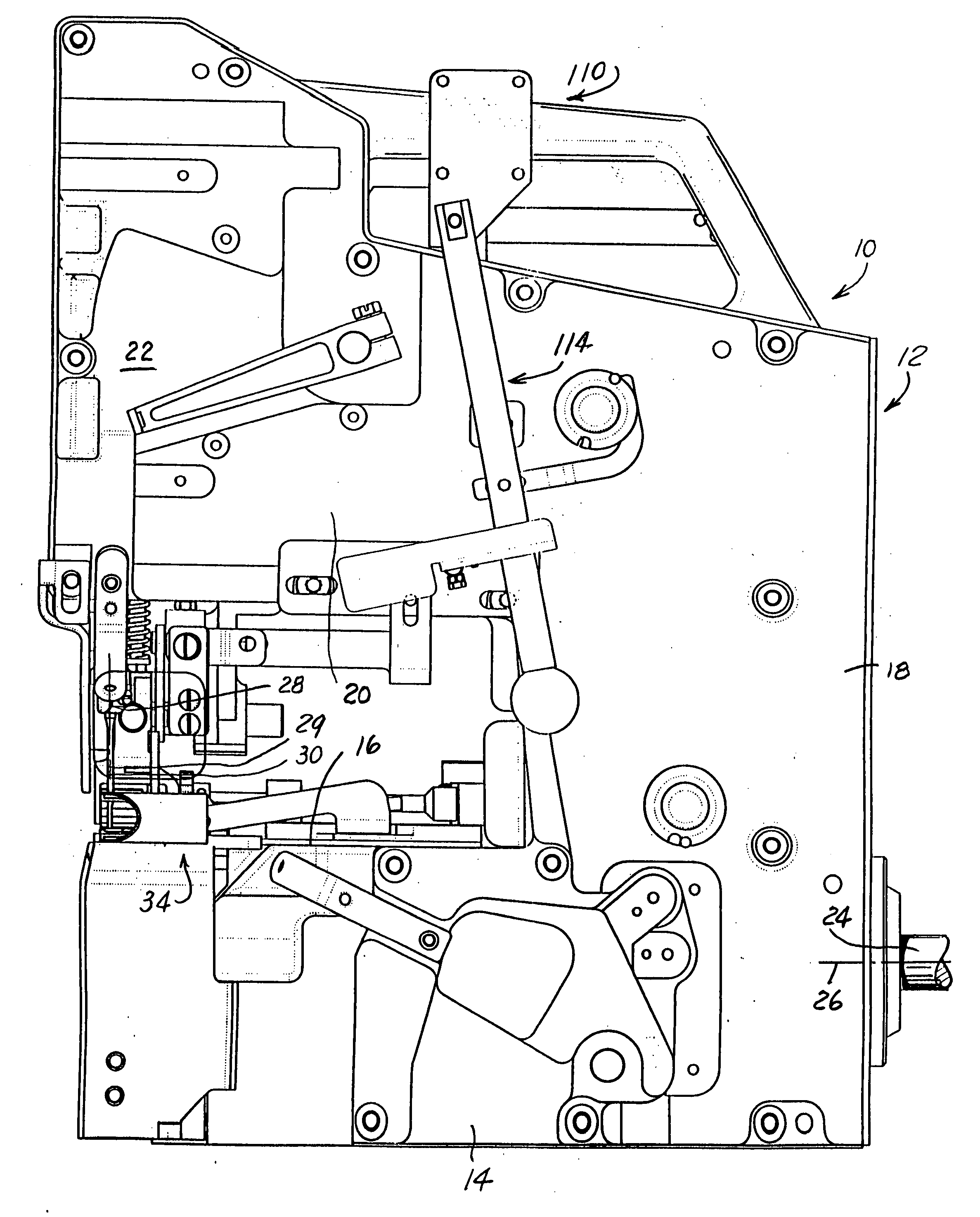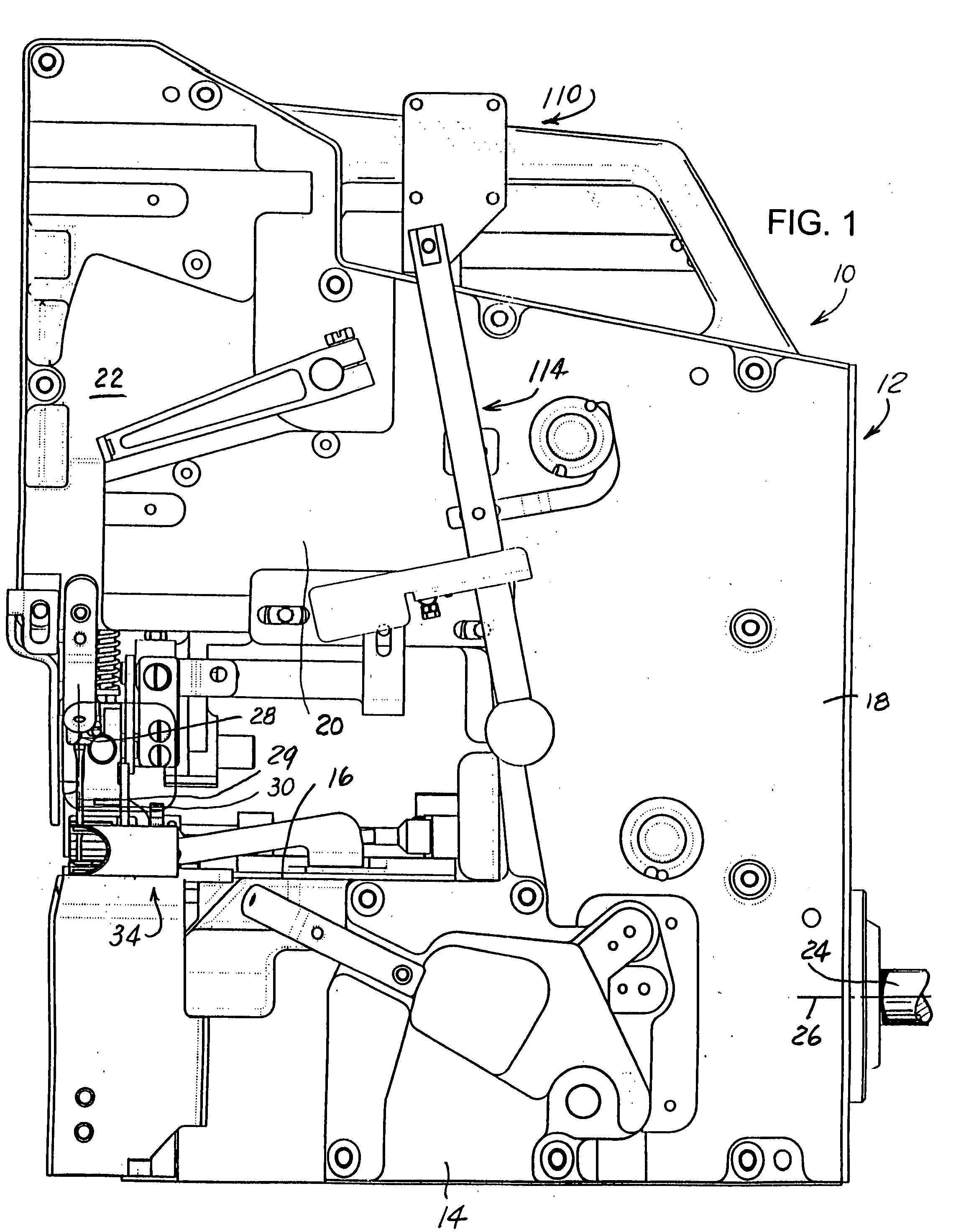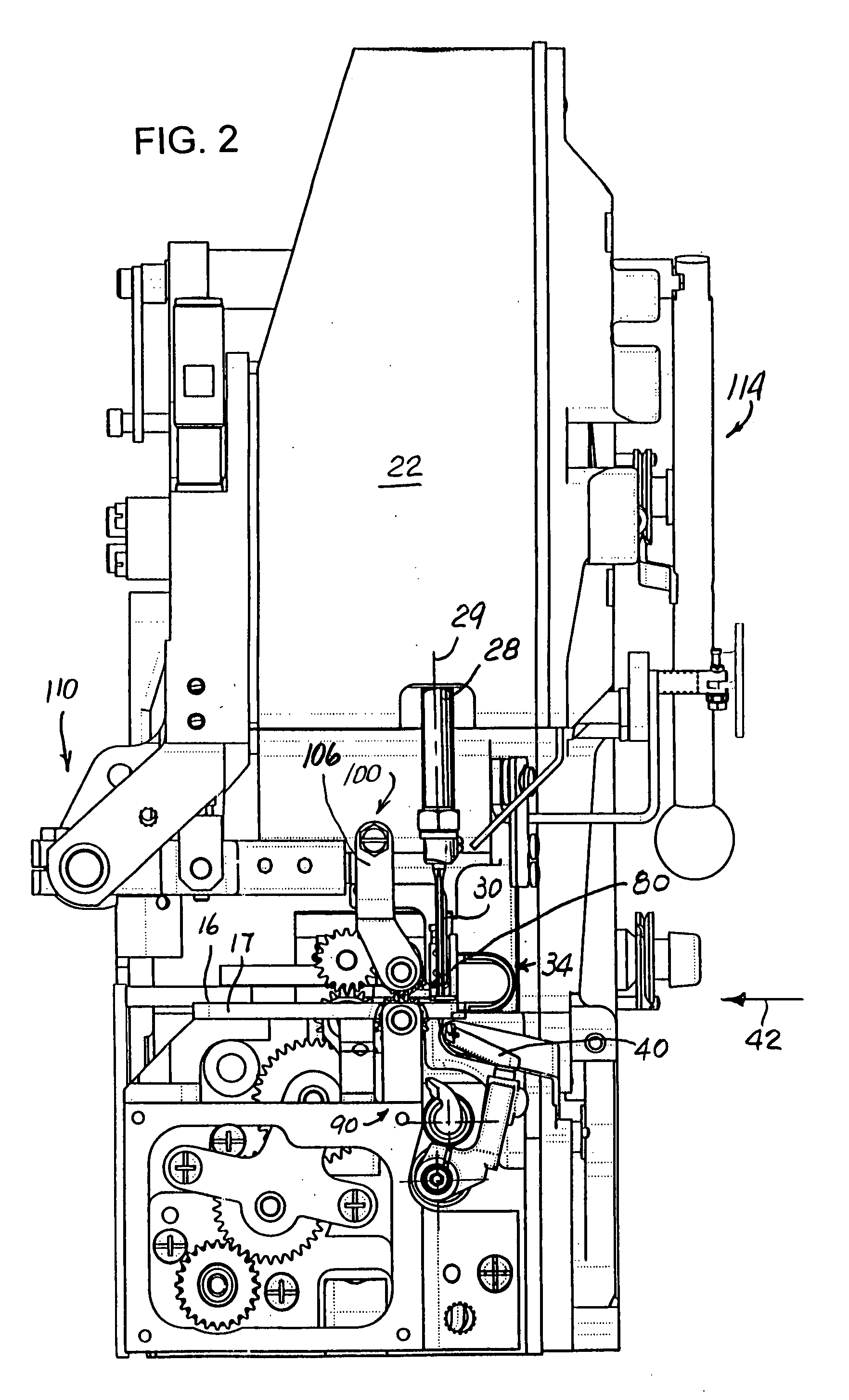Mattress edge sewing machine
- Summary
- Abstract
- Description
- Claims
- Application Information
AI Technical Summary
Benefits of technology
Problems solved by technology
Method used
Image
Examples
Embodiment Construction
[0046]While the present invention is susceptible of embodiment in multiple forms, there is shown in the drawings and will hereinafter be described a preferred embodiment of the invention, with the understanding the present disclosure sets forth an exemplification of the invention which are not intended to limit the invention to the specific embodiment illustrated and described.
[0047]Referring now to the drawings, wherein like reference numerals indicate like parts throughout the several views, there is schematically shown in FIG. 1 a mattress edge chain-stitch sewing machine, generally identified by reference numeral 10. Sewing machine 10 includes a housing 12 having base portion or bed 14 provided with a work or material supporting surface 16 including a throat plate 17 (FIG. 2), a standard 18 extending vertically from one end of bed 14, and an arm 20 which overlies bed 14 and terminates in a sewing head portion 22. A drive shaft 24 axially extends from and is supported in the bed ...
PUM
 Login to View More
Login to View More Abstract
Description
Claims
Application Information
 Login to View More
Login to View More - R&D
- Intellectual Property
- Life Sciences
- Materials
- Tech Scout
- Unparalleled Data Quality
- Higher Quality Content
- 60% Fewer Hallucinations
Browse by: Latest US Patents, China's latest patents, Technical Efficacy Thesaurus, Application Domain, Technology Topic, Popular Technical Reports.
© 2025 PatSnap. All rights reserved.Legal|Privacy policy|Modern Slavery Act Transparency Statement|Sitemap|About US| Contact US: help@patsnap.com



